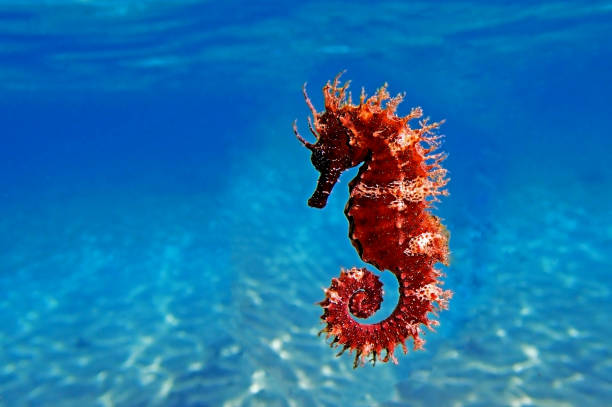When I was a child, by far, my favorite animal in the sea was the seahorse. I was fascinated by these wonderful creatures and always made a beeline for their aquarium every time we visited our local Sea World exhibition.
Despite their name, seahorses are fish species, not reptiles or mammals. These remarkable creatures can swim upside down and even backward! And did you know that male carries the young in a pouch and gives birth to them, not females?
Seahorses have many more fascinating secrets, so keep reading to learn everything you never knew about these amazing equine-lookalike fish!
Hippocampus Animal, The Most Graceful Creature In The Water!
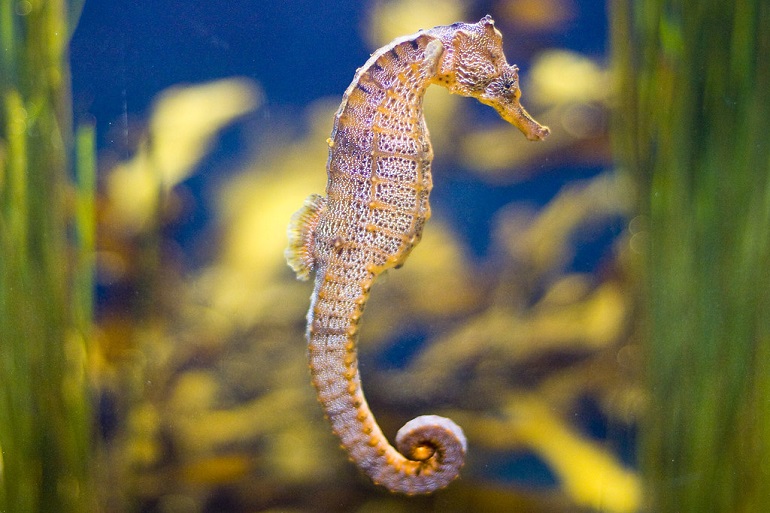
Throughout history, seahorses have been widely considered the most graceful creatures in the ocean!
In Ancient Greek mythology, hippocampi were portrayed as aquatic horses or sea monsters with the head and front legs of a horse but the tail of dolphins or fish. The sea god, Poseidon, rode in a chariot drawn by hippocampi, sometimes carrying their master right out of the water!
Seahorse’s Natural History
The seahorse is a fish belonging to the genus Hippocampus and the family Syngnathidae, which includes pipefishes and seadragons.
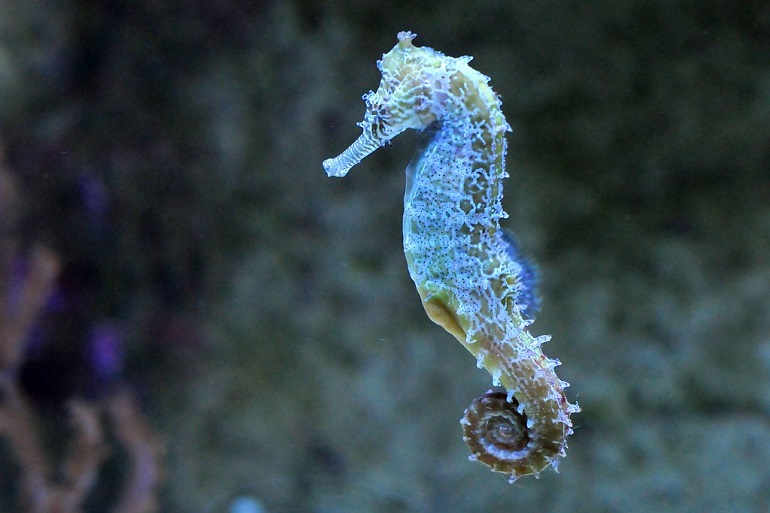
The name Syngnathidae comes from the Ancient Greek σύν, meaning “together,” and γνάθος, meaning “jaw.” All the creatures in the family have a common trait of a fused jaw, which is where the name comes from.
Seahorse Evolution
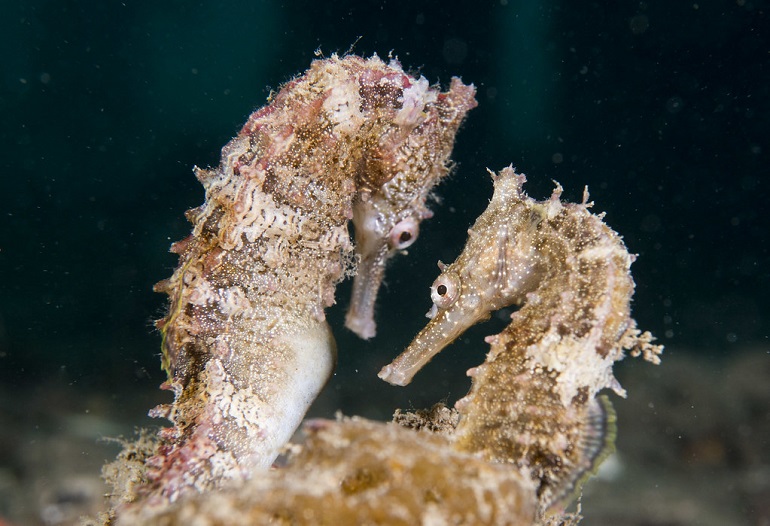
Here is an overview of the seahorse’s fossil record.
Fossil Record
Unfortunately, the fossil record of seahorses is somewhat sparse. However, in studies of specimens of Hippocampus guttulatus found in Rimini Province, Italy, fossils were dated to the Lower Pliocene period, around 3 million years ago.
Hippocampus slovenicus and Hippocampus sarmaticus are two pipefish-like creatures found in Slovenia and are thought to date back around 13 million years. These are thought to be the earliest recorded seahorse fossils.
Further research suggests that seahorses and pipefish diverged during the late Oligocene period. Early seahorses evolved to inhabit large areas of shallow water and seagrass habitats, where the Hippocampus developed its upright posture as a means of camouflage and to capture small prey items more efficiently.
Seahorse Species
It is thought there are around 46 species of seahorses currently in existence, but that number is increasing constantly!
Since the Long snouted seahorse was discovered in 1812, many more species have been found, including the following:
- West Australian seahorse (1873)
- Flatface seahorse (1877)
- Hedgehog seahorse (1912)
- Bullneck seahorse (1997)
As recently as 2020, Hippocampus nalu, or Sodwana pygmy seahorse, was found. So, who knows how many more species of this secretive, mysterious creature could be hiding undetected in the world’s oceans, just waiting to be discovered!
What Does A Seahorse Look Like?
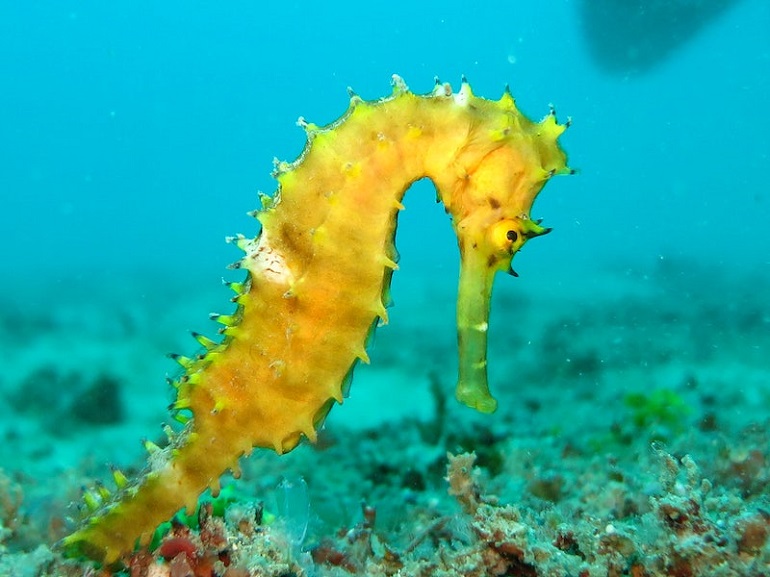
Seahorses have an equine appearance with long-snouted heads, arched necks, and a distinctive body shape and tail.
These are classified as bony fish, having skin stretched over a number of bony plates rather than scales. The bony plates are arranged in a specific number of rings, depending on the seahorse species. Thanks to this external skeleton, the seahorse doesn’t have ribs.
Seahorse Size
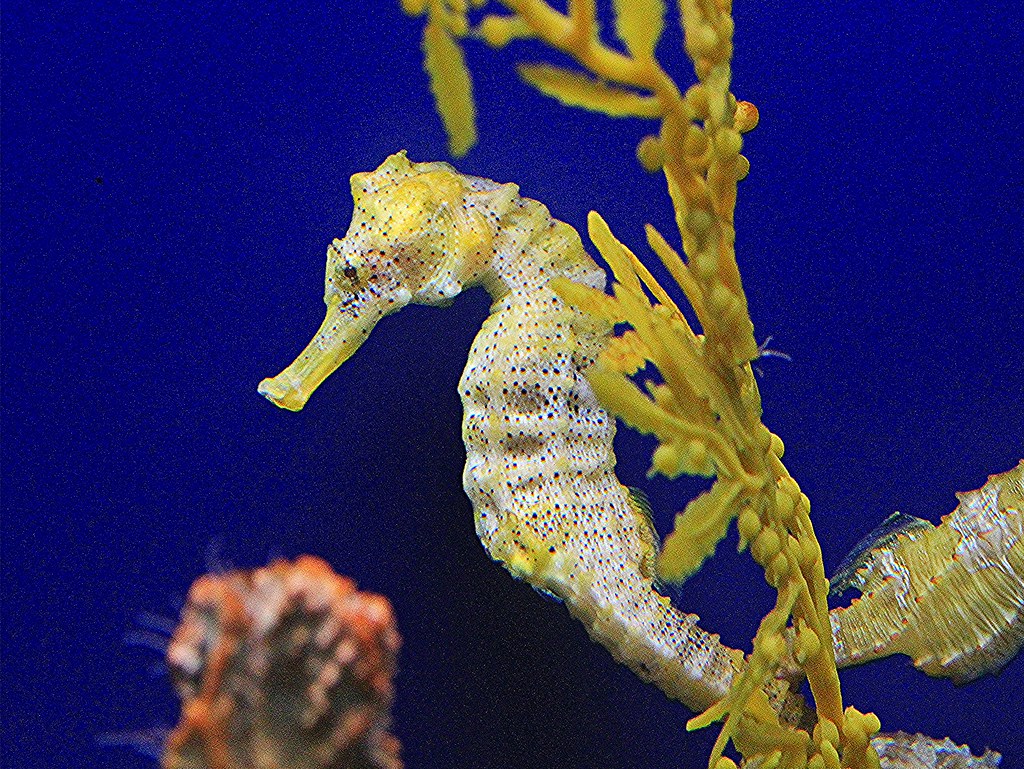
Seahorses range in size from a tiny 1.5 inches to as large as 14 inches.
According to the Guinness Book of World Records, Satomi’s pygmy seahorse is the smallest species, measuring only 13.8 mm in length, smaller than your fingernail, and just 11.5 mm tall!
The largest seahorse is the Big-belly seahorse, which can grow to measure 14 inches long.
Seahorse Eyes
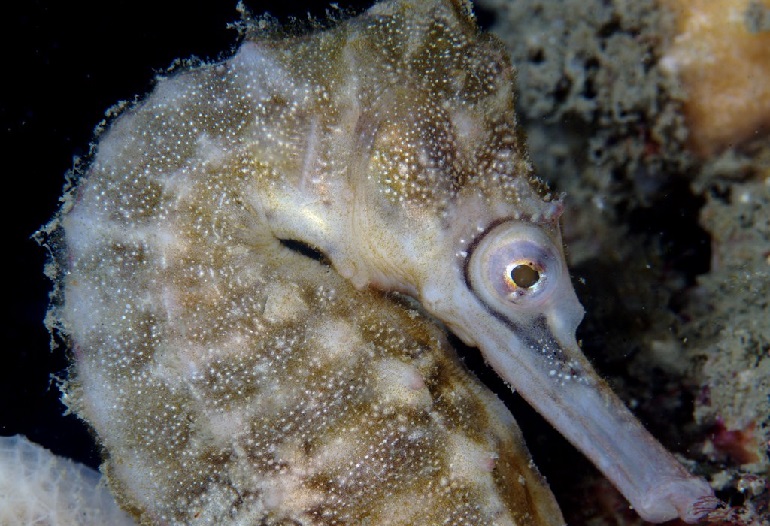
A seahorse has one eye on either side of its head. The eyes can move independently of each other, allowing the creature to look backward and forward at the same time as it searches for food.
Now, that’s pretty cool!
Seahorse Head
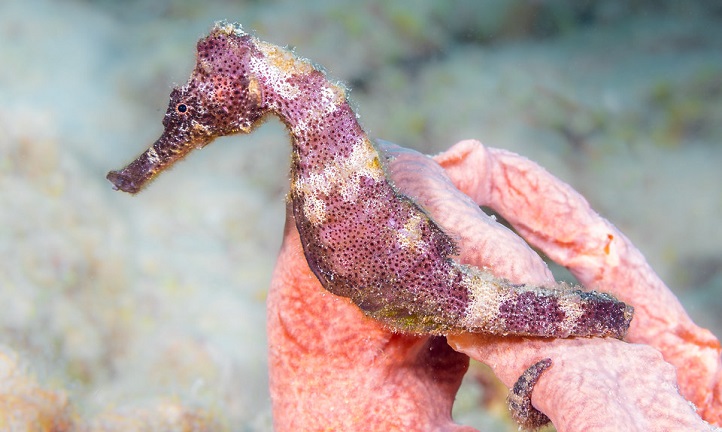
The seahorse has a flexible, arched neck and a crown-like horn on its head called a “coronet,” which is different for every species.
Hippocampus has a long snout that’s used to suck up food.
Where Do Seahorses Live?
Seahorses are found in temperate and tropical waters around the world. Most species inhabit coral reefs and shallow seagrass beds in the Indo-Pacific, while others live in the oceans of New Zealand and Australia.
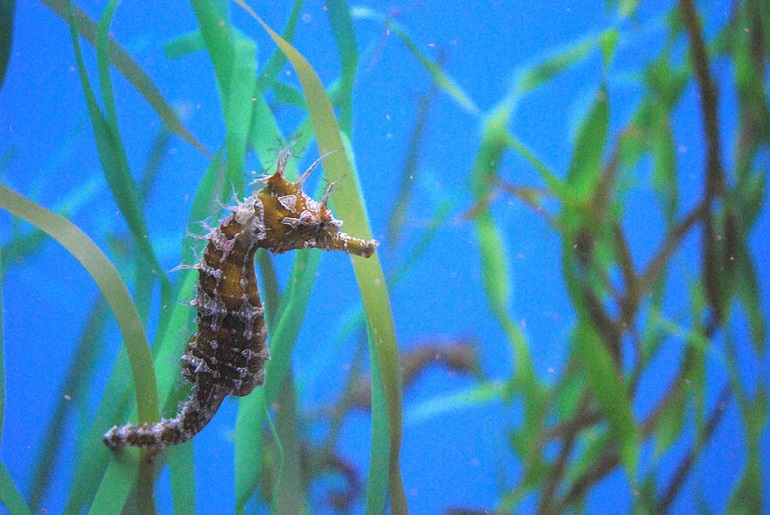
US waters have one seahorse species, Hippocampus Erectus, found on the west coast of North America around California.
Most true seahorses live in the marine environment. However, there are several species, including Hippocampus capensis, that can live in brackish estuaries as they can tolerate a wide range of salinity.
Occasionally, you’ll see seahorses advertised for sale as freshwater species. However, these are actually freshwater pipefish, as true seahorses cannot live in freshwater.
Camouflage
Many seahorses are masters of disguise, changing color to blend seamlessly with their surroundings and keep clear of predators. Not only that, but the seahorse can grow and reabsorb tiny spines to change its texture, depending on the surrounding habitat.
Most seahorse species live alone or in mated pairs. However, you can find some varieties living in large pods of up to several hundred individuals!
The lifespan of wild seahorses is not accurately known. In captive-kept specimens, the life expectancy is typically from one to five years or slightly more, depending on the species.
Seahorses Movement
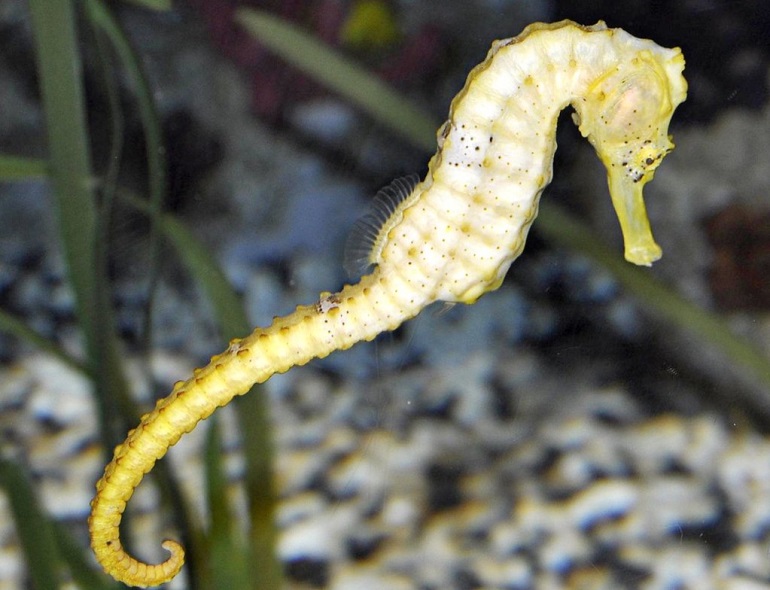
Although the seahorse is a graceful animal, it is not a strong swimmer, fluttering its dorsal fin to generate movement and steering with its pectoral fins.
Hippocampus zosterae, the Dwarf seahorse, is never going to win any races, with a top “speed” of only 5 feet per hour, making this the slowest “horse” on the planet!
Since they are such dreadful and poor swimmers, seahorses spend much of their time in calm waters using their prehensile tails to grab onto fixed objects so that the creatures are not swept away.
Seahorse Diet
Seahorses are carnivorous and have an insatiable appetite. Depending on the species, they enjoy a typical diet of copepods, krill, fish larvae, and invertebrates.
Feeding Habits
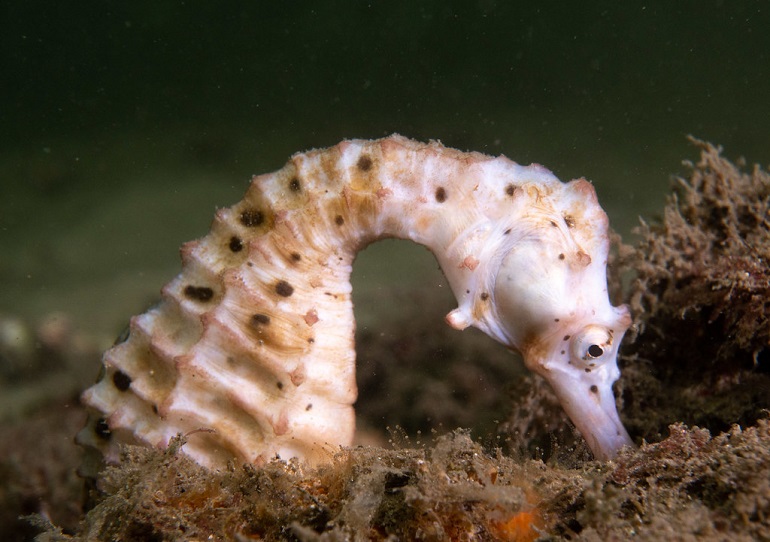
The seahorse anchors itself around a fixed base using its prehensile tail and then waits, motionless, for prey to come along within striking range. Now you can see why these animals have such incredible camouflage!
Seahorses don’t have teeth, nor do they have a stomach in which to store the food they eat. That means the seahorse must eat constantly so that it doesn’t starve. So, the animal must use its long snout to vacuum up food items in a pretty much constant cycle.
Amazing Seahorse Facts
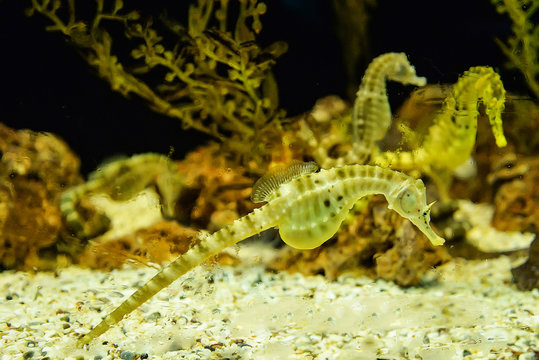
Here are a few amazing seahorse facts that you can use to impress your friends!
- Once the female seahorse has produced her eggs, it’s her male partner that deals with the pregnancy and birth!
- Seahorse pairs mate for life, not just for one breeding season.
- Seahorse pairs often wrap their tails around one another so they don’t get separated in a strong current.
- Seahorses are lousy swimmers, so they often grab onto passing bits of debris or even passing animals to get from A to B!
- Seahorses live on every continent in the world except for Antarctica.
We think you’ll agree; that’s incredible!
Seahorse Reproduction
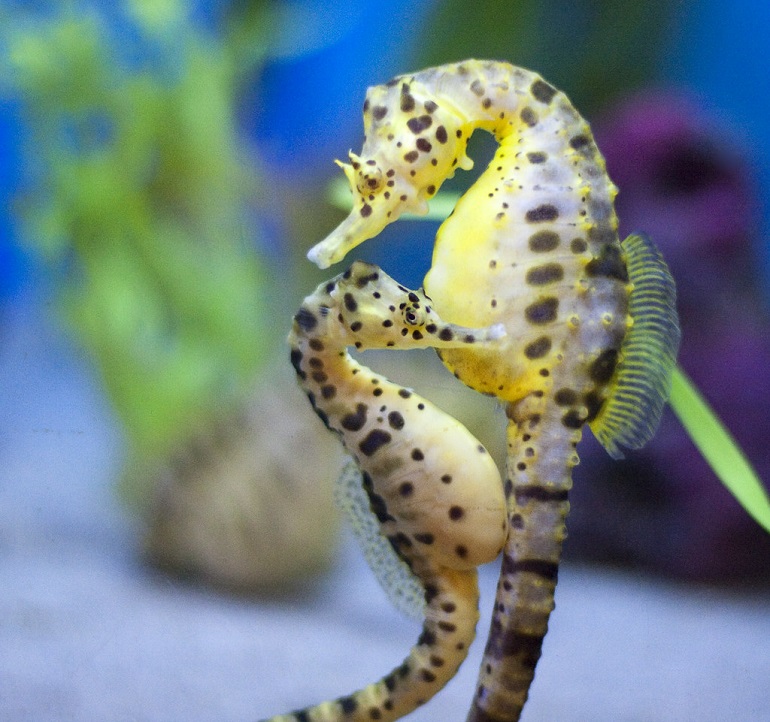
So, you know that male seahorses do all the donkeywork where producing young is concerned. But how do they do that?
Male seahorses have a brood pouch on the front-facing side of their tail. During mating, the female seahorse places around 1,500 eggs into the pouch, and the male seahorse then carries the eggs for up to 45 days.
The tiny baby seahorses or fry are born fully developed and released into the water. Once the male has given birth, he often mates again within hours or days during the spawning season.
Courtship Phases
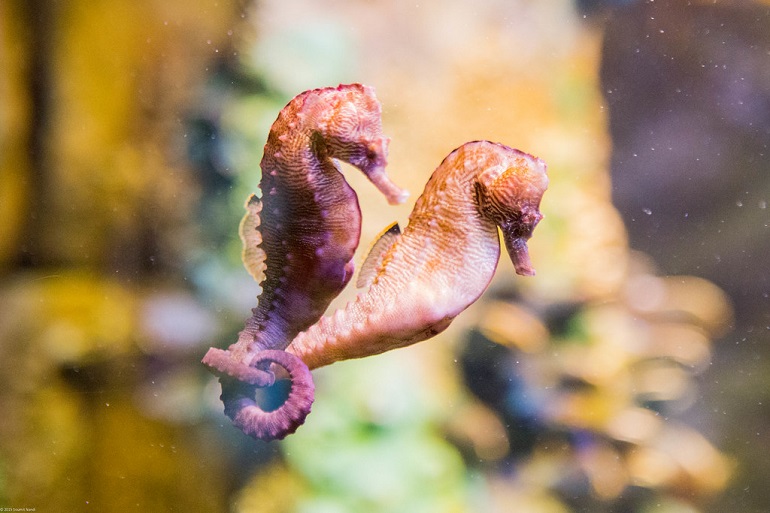
There are four phases of courtship that are shown by clear changes in behavior and the intensity of the courtship act.
It’s thought that this ritualized courtship behavior serves to synchronize the seahorses’ movements and their readiness to reproduce.
Throughout the courtship, the seahorses can change color, swim side by side with their tails wrapped around each other, or perform what’s called a “predawn dance,” which can last for up to eight hours.
Once the female’s eggs mature, she and the male release their grip on any anchors and float snout-to-snout out of the seagrass, typically describing spirals as they rise. The female then swims away, returning the following morning when she deposits thousands of eggs into the male’s pouch using her ovipositor.
When the deed is done, both seahorses sink elegantly back into the safety of the seagrass, and the female swims away.
Initial Courtship
The initial courtship phase takes place in the early morning, a day or two before copulation.
During the initial courtship phase, the seahorses’ colors brighten, and both parties begin to quiver and display side-to-side vibrations.
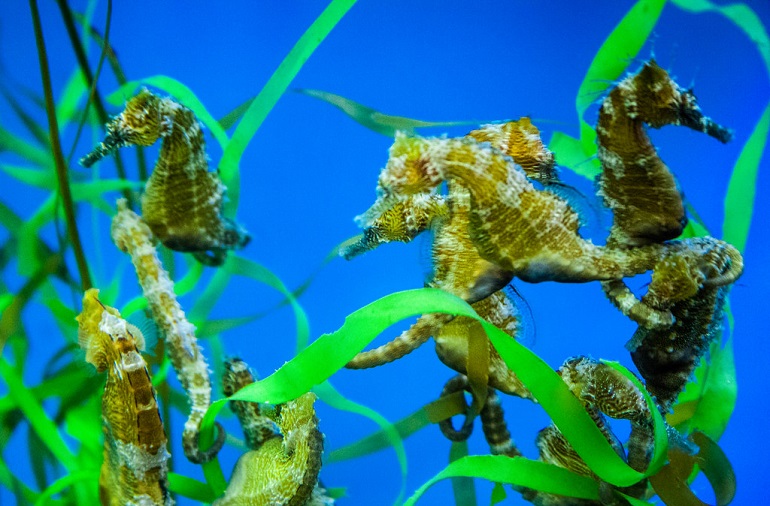
Pointing and Plumping
The second phase is called the pointing and pumping phase and begins when the female seahorse leans her body backward toward the male. The male leans away, quivering.
Phase 2 of the seahorses’ courtship can last for up to 54 minutes, after which there’s an inactive period when no courtship behavior is displayed. Sometimes, males display a body-pumping motion.
Pointing – Pointing
In this third phase, the female brightens in color and assumes her pointing position. The male reciprocates with his own brightening and pointing display.
The phase ends when the male leaves and lasts for around nine minutes. Interestingly, this phase can happen from one to six times throughout the courtship ritual with one partner.
Rising and Copulation
In this final phase of courtship, both male and female seahorses have anchored to the same fixed point a few centimeters apart. The creatures are bright in color and usually face each other.
There can be up to eight bouts of courtship in this phase when the seahorses rise up together through the water column. During the final rise, the female seahorse deposits her eggs in the male’s brood pouch with her ovipositor.
Fertilization
During fertilization, the male’s brood pouch opens to allow seawater to enter and mix the sperm and eggs together.
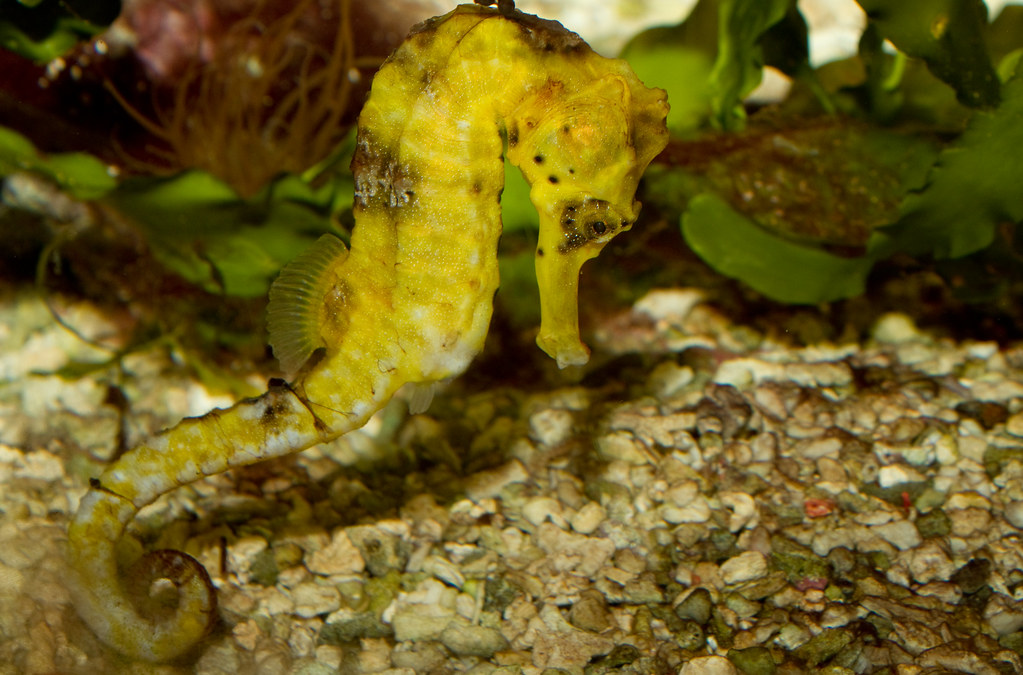
For that reason, fertilization is regarded as taking place externally within an internal environment once the pouch has closed.
Gestation
Gestation takes around two to four weeks in most seahorse species. Throughout that time, the fry receives everything they need to grow within the safety of the male’s brood pouch, including oxygen, food, and regulated salinity that prepares the fry for life in the ocean.
Throughout gestation, the female doesn’t abandon her mate but visits him every day for what’s termed “daily greetings.”
Birth
The male gives birth to the fry by using muscular contractions to push the little seahorses out of his pouch and into the ocean.
Birth usually happens at night so that the male is ready to receive the next batch of eggs in the morning when his mate returns.
Seahorses don’t care for their young after birth. That means the fry is vulnerable to attack by predators and can be washed away from the safety of the seagrass by the ocean current. In fact, under 0.5% of the fry can expect to survive to maturity, which explains why so many babies are produced in each spawn.
Reproductive Functions
It’s not understood why male seahorses take the role of carrying and giving birth to their young since that requires massive amounts of energy that are usually reserved for the aggressor in a partnership.
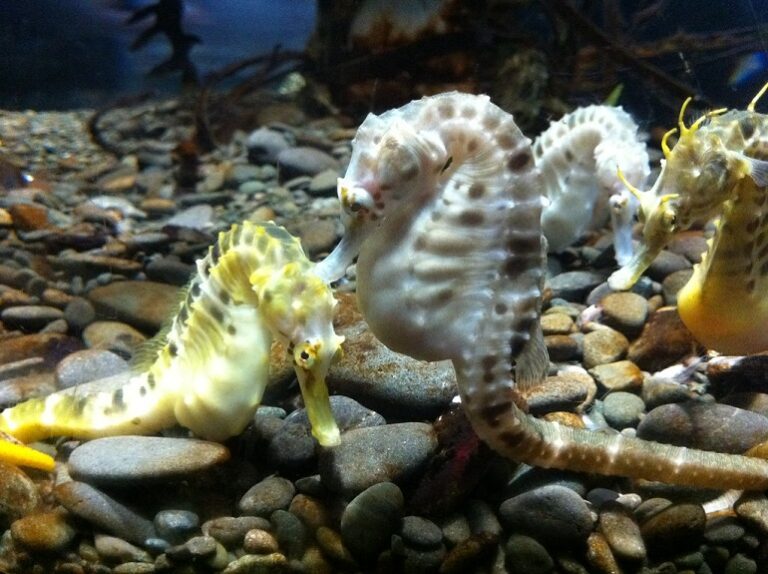
That said, male seahorses do sometimes “fight” for the attention of females.
In addition, the female seahorse sometimes takes “time out” from the reproductive cycle to recover from the extreme effort it takes to produce the eggs.
Once the eggs are ready, the female must deposit them into her mate or eject them into the water column. So, to prevent the risk of waste, courtship phases tend to be quite lengthy.
Use In Chinese Medicine
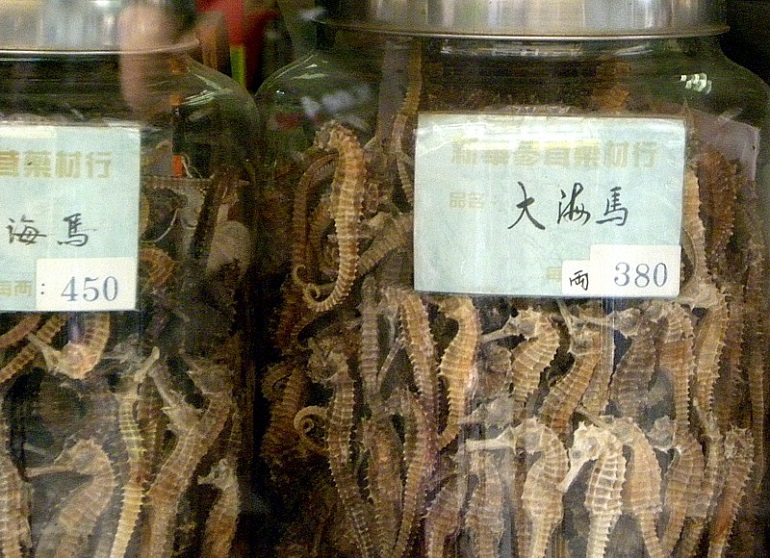
Many species of seahorses are endangered or threatened, some because of overfishing for use in traditional Chinese medicine.
Dried seahorses have been used in Chinese traditional medicines for centuries. Practitioners believe that seahorses have the potential to cure a whole range of conditions, including the following:
- Baldness
- Infertility
- Arthritis
- Asthma
- Sexual dysfunction
Dried seahorse is mixed with herbs and boiled to make a tea that the patient then consumes.
In China, seahorses are worth more than silver and almost gold, fetching from US$600 to $3,000 per kilogram! Interestingly, larger, smoother pale-colored seahorses attract the highest prices.
Seahorses Threats And Conservation Status
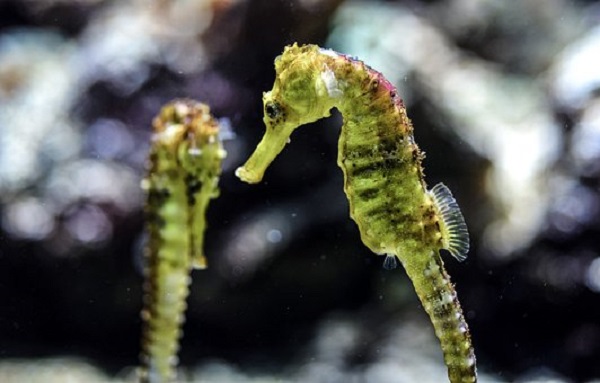
According to the IUCN, an alarming number of seahorses and pipefish species are currently listed as critically endangered or vulnerable.
It’s thought that seahorse numbers have declined mainly because of non-selective fishing and bycatch, as well as targeted, aggressive fishing. However, it’s generally non-selective fishing rather than demand for seahorses that have fuelled their demise.
Habitat Loss
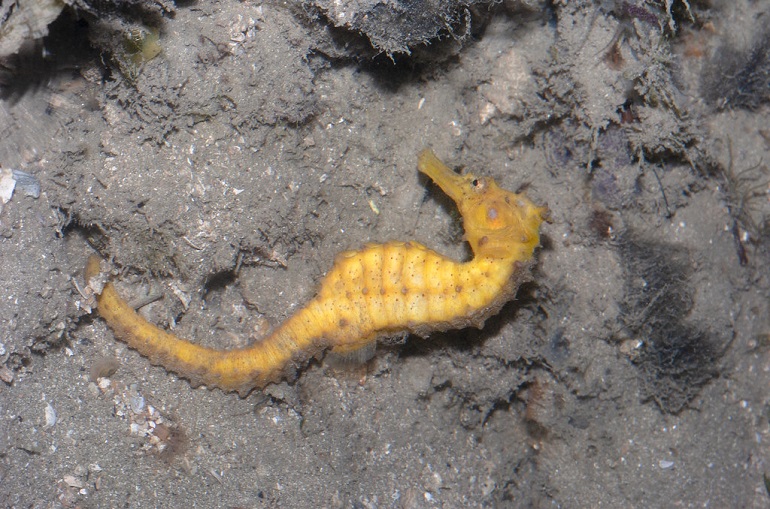
Many estuarine species are also affected by habitat loss and degradation caused by pollution, eutrophication, and sedimentation. In addition, populations of some seahorse species have been negatively impacted by climate change and invasive species.
That said, it’s fisheries that are placing the heaviest pressure on all seahorse species, as is the case with most other marine creatures.
Devastating Numbers
It’s estimated that as many as 70 million seahorses are taken from the oceans each year, and 80 countries are actively involved in the international trade of these beautiful, harmless creatures.
Keeping and Breeding Seahorses In the Aquarium
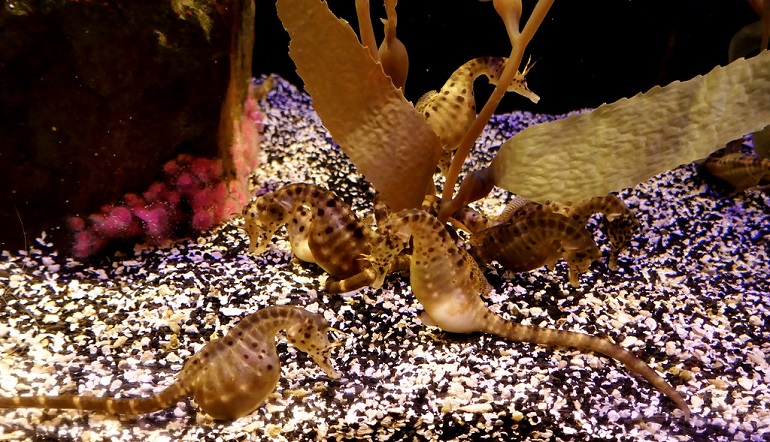
Some seahorses are collected from the wild environment and sold through the trade to aquarists, which has unfortunately taken a severe toll on the numbers of several species.
Sadly, many wild seahorses don’t do well in captivity, often succumbing to diseases caused by stress and the lack of a suitable live diet.
That said, in recent years, hobbyists have gained a greater understanding of the needs of seahorses, and breeding these animals in captivity has become increasingly popular. Captive-bred seahorses are generally hardier, survive much longer, and are less likely to carry diseases than wild-caught specimens.
In addition, captive-raised seahorses don’t suffer the stress of being caught, taken from their home environment, and transported potentially thousands of miles.
So, although captive-bred Hippocampus are more expensive to buy, they don’t take a toll on wild populations.
Saving Seahorses
Project Seahorse works tirelessly to save seahorses by running numerous initiatives and projects on fisheries, the seahorse trade, and protected areas where seahorses can breed and exist in safety.
You can make a difference to seahorses by partnering with Project Seahorse, driving societal change, and taking individual steps to help save these amazing creatures. You can find more information on how to get involved on the Project Seahorse website.
FAQ’s
Here are the answers to a few of the questions most commonly asked about seahorses.
How Big Do Seahorses Get?
Seahorses range widely in size! Some are as small as a pine nut, whereas others can be the size of a banana!
What Is the Scientific Name of the Seahorse?
The seahorse’s scientific name is Hippocampus.
What Is a Baby Seahorse Called?
Contrary to popular myth, baby seahorses are not called seafoals! These tiny, fully-formed seahorses are correctly called fry.
Final Thoughts
I hope you enjoyed our guide to the beautiful, magical seahorse. If you did, please take a moment to share the article.
Many species of seahorses are already listed as vulnerable or endangered, largely due to overfishing and habitat destruction. Thankfully, more new species of these remarkable creatures are being discovered all the time.
There is much we can do to save seahorses and stop the decline of this ancient, magical fish.
Have you taken action to save these amazing, threatened creatures? Tell us what you’ve done to help the endangered seahorse in the comments box below!


